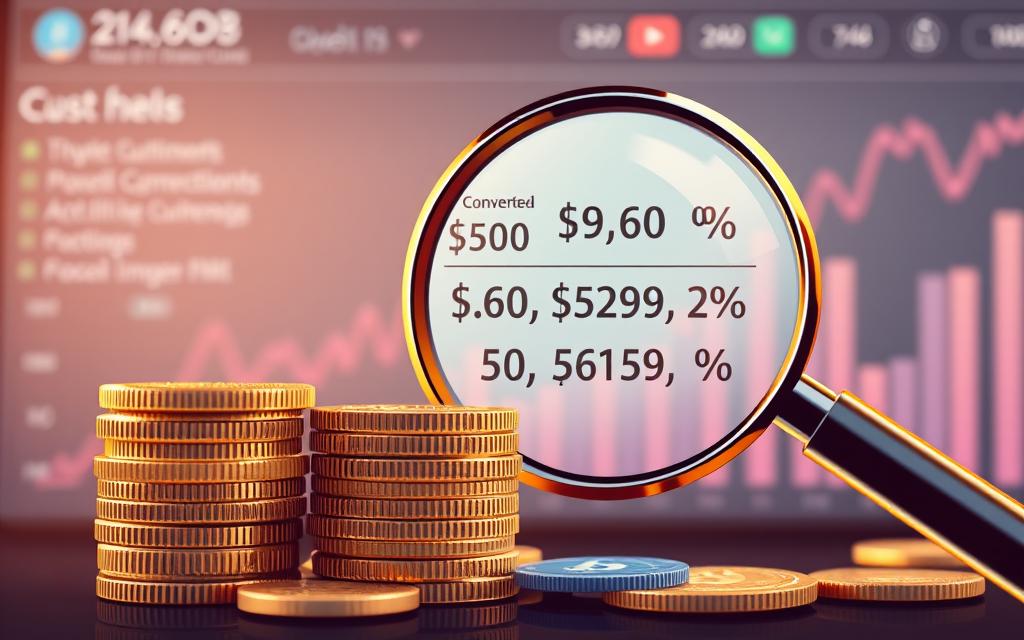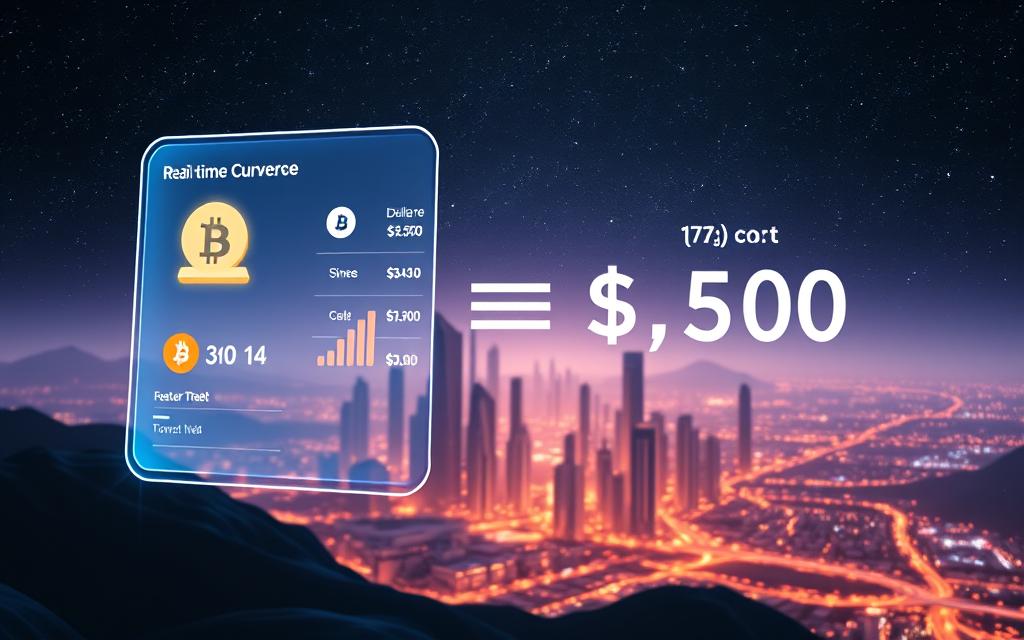How to Convert Cryptocurrency to USD – A Simple Guide
Digital assets have surged in popularity, creating a strong demand for converting crypto into traditional currency like USD. Many investors seek secure and efficient methods to exchange their holdings for cash. Platforms such as PayPal and Crypto.com offer reliable solutions with fraud protection and global transaction capabilities.
Choosing the right exchange is critical. Established services like Kraken provide competitive rates, high security, and user-friendly interfaces. Proper documentation, including personal identification and proof of address, ensures smooth account setup and compliance with regulations.
Tax obligations must also be considered. The IRS requires filings such as Form 5472 for LLCs dealing with crypto transactions. Understanding these rules helps avoid legal issues while optimizing financial strategies.
With 24/7 market availability, converting digital assets to USD has never been more accessible. Whether for personal use or business needs, secure platforms make the process seamless.
Understanding Cryptocurrency and USD Conversion
Cryptocurrencies have revolutionized financial transactions, offering decentralized alternatives to traditional money. Unlike government-issued currencies, these digital assets operate on blockchain technology, ensuring transparency and immutability. Major platforms like PayPal describe crypto as “a digital currency existing only online, with markets running 24/7.”
What Is Cryptocurrency?
Crypto.com defines it as “decentralized currency using blockchain tech with PoW/PoS mechanisms.” This means no central authority controls transactions. Instead, a distributed ledger verifies and records every exchange, enhancing security and reducing fraud risks.
Why Convert Crypto to USD?
Investors often swap digital assets for cash to lock in profits or avoid market swings. Traditional purchases—like real estate or groceries—still rely heavily on USD. Services like PayPal offer $50K unauthorized transfer protection, while Crypto.com boasts ISO certifications for institutional-grade safety.
Tax compliance is another key factor. The IRS treats crypto as property, requiring proper reporting during conversions. Always verify platform fees and account requirements to streamline the process.
How Do You Sell Cryptocurrency for USD?
Reliable exchanges simplify the process of turning crypto holdings into spendable USD. Whether cashing out profits or funding purchases, selecting the right platform ensures speed, security, and compliance.

Step 1: Choose a Reliable Platform
Compare features like fees, supported currencies, and verification speed. PayPal offers instant conversions during checkout, while Crypto.com supports 20+ fiat currencies. Both require identity checks but differ in onboarding:
| Feature | PayPal | Crypto.com |
|---|---|---|
| Verification | W-9 form + automatic integration | KYC with document upload |
| Conversion Speed | Instant at checkout | 1–3 business days |
Step 2: Link Your Bank Account
Connect a bank account to withdraw funds. PayPal’s in-app guide walks users through this, while Crypto.com allows card payments. Ensure your details match to avoid delays.
Step 3: Execute the Sale
Review exchange rates and fees before confirming. On Crypto.com, use market/limit orders for better control. PayPal auto-converts during payment, ideal for merchants. Note: Network congestion may slow transaction times.
For recurring conversions, set rate alerts via the app to optimize timing. Always double-check wallet addresses and tax reporting requirements.
Popular Platforms to Sell Crypto for USD
Multiple services compete to offer the fastest and safest crypto-to-USD transactions. Each platform varies in fees, currency support, and security measures. Below, we compare top choices for seamless conversions.
PayPal: Quick and User-Friendly
PayPal supports Bitcoin, Ethereum, Litecoin, and Bitcoin Cash with *zero conversion fees*. Users can instantly swap crypto during checkout, ideal for online purchases. The bank integration process is streamlined, with fraud protection covering up to $50,000.
Steps to convert:
- Select “Checkout with PayPal” at supported merchants.
- Choose your crypto asset and review rates.
- Confirm the sale—funds deposit directly to your balance.
Crypto.com: Diverse Currency Support
With 400+ cryptocurrencies and Apple/Google Pay integration, Crypto.com caters to global users. Its wallet features include triple yield swaps and Onchain staking. Institutional-grade security (ISO certifications) ensures safe transfers.
| Feature | PayPal | Crypto.com |
|---|---|---|
| Fees | 0% conversion | Tiered rates |
| Speed | Instant | 1–3 days |
Peer-to-Peer (P2P) Marketplaces
P2P exchanges like LocalBitcoins offer a decentralized method, but risks include scams or price volatility. Always verify trader ratings and use escrow services. Platform-mediated options provide better fraud protection.
Security Measures When Selling Crypto
Protecting digital assets during conversion requires robust security measures. Scammers often target vulnerable transactions, making vigilance essential. Leading platforms like PayPal and Crypto.com offer tools to safeguard your funds.
Enable Two-Factor Authentication
Two-factor authentication (2FA) adds a critical layer of security. PayPal’s reimbursement policy covers *”up to $50K for unauthorized transfers”*—but only if 2FA is active. Crypto.com, with its *”highest industry certifications,”* mandates 2FA for all withdrawals.
Steps to set up 2FA:
- Navigate to account settings on your chosen platform.
- Link an authenticator app (e.g., Google Authenticator).
- Store backup codes offline to prevent lockouts.
Verify Transaction Details
Always double-check recipient addresses using checksum validation. Bitcoin transactions typically need 3–6 blockchain confirmations for finality. Delays may occur during network congestion.
Cold storage wallets are ideal for holding assets pre-transfer. Avoid phishing scams by never sharing private keys or clicking unverified links.
Fees Associated with Crypto-to-USD Conversions
Transaction costs impact the final amount received when swapping crypto for USD. Three fee types dominate: exchange charges, blockchain costs, and bank transfer fees. Smart investors compare these to maximize cash withdrawals.

Exchange Fees
Platforms use different pricing models. PayPal states “No additional fee for crypto-to-fiat conversions,” but adjusts rates via spreads. Crypto.com charges a 0.4% spot trading fee for takers, while makers pay 0%. High-volume traders qualify for discounts.
| Platform | Fee | Notes |
|---|---|---|
| PayPal | Spread-based | No explicit fee |
| Crypto.com | 0.4% (taker) | Reduced for stakers |
Network (Blockchain) Fees
Ethereum’s gas fees fluctuate with demand—sometimes exceeding $50 per transaction. Bitcoin averages $0.79 per transfer. Timing trades during low congestion slashes costs.
Bank Transfer Fees
Crypto.com offers free ACH withdrawals but charges $25 for international wires. For faster access, their debit card avoids transfer delays, though ATM withdrawals incur a 2% fee over limits.
Example: Converting $1,000 via Crypto.com costs $4 (0.4%) + $0.79 (Bitcoin fee) + $0 (ACH) = $4.79 total. Exchange fee structures vary widely—always verify before committing.
How Long Does It Take to Convert Crypto to USD?
Converting digital assets to cash involves varying timelines depending on the platform and method. Some services complete transfers in minutes, while others require several business days. Key factors include exchange policies, banking partnerships, and blockchain congestion.

PayPal boasts *”instant conversion during checkout,”* ideal for urgent purchases. In contrast, Crypto.com notes *”bank withdrawals take 2–5 business days.”* Peer-to-peer (P2P) markets add variability—trades may settle within hours or stretch over a week.
| Platform | Processing Time | Notes |
|---|---|---|
| PayPal | Instant | Only during merchant checkout |
| Crypto.com | 1–3 days (ACH) | Weekends delay withdrawals |
| Bitcoin ATMs | Immediate | High fees (5%–15%) |
Payment methods also impact speed. Debit cards often provide faster access than ACH transfers. For example, Crypto.com’s Visa card delivers funds instantly, while bank-linked withdrawals take longer. Always verify cut-off times—weekends and holidays pause processing.
In the decentralized world of P2P trading, settlement times depend on the buyer’s payment method. Escrow services mitigate risks but may add delays. State-specific regulations (e.g., New York’s BitLicense) can further slow withdrawals.
Tax Implications of Selling Cryptocurrency
Tax rules for crypto transactions differ significantly from traditional investments. The IRS classifies digital assets as *property*, meaning every sale triggers a taxable event. Gains or losses must be reported, similar to stocks or real estate.

Calculating cost basis is essential. Include purchase price, fees, and adjustments for splits or forks. Platforms like PayPal simplify this with *”automatic 1099 forms for reportable sales.”* Crypto.com offers integrated tax reporting tools to track historical data.
Key IRS forms for crypto:
| Form | Purpose | Platform Support |
|---|---|---|
| Form 8949 | Details capital gains/losses | Manual entry required |
| Schedule D | Summarizes Form 8949 | Auto-filled by PayPal |
Unlike stocks, crypto isn’t subject to the wash sale rule. Losses can’t be disallowed for repurchasing within 30 days. However, tax evasion risks rise with unreported transactions—penalties reach 20% of underpaid amounts.
Pro tip: Use FIFO (First-In-First-Out) for cost basis unless you specify another method. New 2025 rules may require per-wallet tracking, complicating reporting.
Using Crypto Debit Cards for Instant USD Access
Crypto debit cards bridge the gap between digital assets and everyday spending. These cards automatically convert holdings to USD at the point of sale, eliminating withdrawal delays. Top options like the Crypto.com Metal Card and PayPal Cashback Mastercard offer distinct perks.
Crypto.com’s Visa card provides up to 5% crypto rewards, while PayPal’s version integrates seamlessly with its checkout system. Both require KYC verification but differ in fees and limits.
ATM withdrawals vary by provider. Crypto.com allows $200/month for basic tiers, with higher limits for stakers. Wirex offers $250 free monthly withdrawals before applying a 2% fee. Always check network charges—BitPay deducts $5 for inactive cards.
Loading mechanisms are straightforward. Funds from linked wallets convert to cash during transactions. Coinbase’s card syncs with its exchange, while BitPay uses an in-built converter.
Spending caps ensure security. Coinbase enforces a $2,500 daily limit, while Nexo requires a $500 portfolio minimum for physical cards. Instant conversion features make these cards ideal for real-time purchases.
Best Practices for Minimizing Conversion Costs
Smart investors prioritize cost-effective strategies when converting digital assets to cash. Even small fee differences can substantially impact your final amount. Below, we outline tactical approaches to optimize transactions.
Timing Your Sale
Market volatility affects conversion rates. Analyze historical patterns to identify low-fee windows—weekday mornings often see reduced blockchain congestion. Limit orders during peak hours lock in favorable rates.
Batch selling averages price fluctuations. Instead of one large transaction, split it into smaller trades over time. Stablecoins like USDT avoid volatility, with platforms like Crypto.com offering “0% fees for stablecoin conversions.”
Comparing Platform Rates
Exchanges vary in fee structures. Binance charges as low as 0.1% for high-volume traders, while Bitcoin ATMs impose 7%–20%. Centralized platforms typically offer tighter spreads than P2P markets.
| Platform | Fee | Best For |
|---|---|---|
| Crypto.com | 0% (stablecoins) | Frequent traders |
| Binance | 0.1% (spot trades) | High-volume sales |
Bank transfers often cost less than card withdrawals. Kraken’s ACH deposits have minimal fees, while Crypto.com’s debit card avoids delays but adds a 2% ATM charge over limits.
Common Pitfalls to Avoid When Selling Crypto
Navigating crypto sales requires awareness of hidden risks that can erode profits. From volatile price swings to regulatory oversights, even small missteps cost investors thousands. Proactive strategies mitigate these threats.
Ignoring Market Volatility
The 2022 LUNA crash wiped out $40B in value within days. PayPal warns, “Platforms cannot protect against market losses.” Sudden drops make timing critical.
Limit orders hedge against volatility. Set price alerts to sell during spikes. Avoid panic liquidations—emotional decisions often lock in losses.
Overlooking Tax Reporting
The IRS treats crypto as property, requiring capital gains reporting. Audits surge when transactions go unreported. Common errors include:
- Missing Form 8949 for trades
- Miscalculating cost basis
- Omitting airdrops as taxable income
Tools like CoinTracker automate records. Long-term holdings (1+ years) qualify for lower tax rates.
Hidden Technical Risks
Mempool congestion delays NFT sales, while wash trading triggers exchange bans. SIM swap attacks drain wallets—always enable 2FA.
Blockchain analytics track every move. The IRS increasingly targets non-compliance. Stay ahead with verified platforms and documented sales.
Alternatives to Selling: Spending Crypto Directly
Many crypto holders prefer spending digital assets directly instead of converting to cash. This approach avoids exchange fees and streamlines transactions. Leading platforms now integrate crypto payments seamlessly into everyday commerce.
PayPal’s Crypto Checkout Feature
PayPal enables users to pay with crypto at 35M+ merchants globally. During checkout, assets auto-convert to fiat, ensuring merchants receive USD. “No additional fees apply beyond standard transaction costs,” notes PayPal’s policy.
Steps to use:
- Select crypto as your payment method at checkout.
- Review the conversion rate (locked for 3 minutes).
- Confirm—funds deduct from your linked wallet instantly.
Merchants Accepting Crypto Payments
Major retailers like Newegg and AT&T now accept crypto. Travel platforms (Travala) and telecom providers expand options. Crypto.com’s Pay SDK lets businesses embed crypto payments into their app or website.
Tax implications differ from selling. The IRS treats direct spending as a disposal event, requiring capital gains reporting. However, small purchases may fall under de minimis exemptions.
Cross-border transactions benefit most. Crypto eliminates currency conversion fees, ideal for freelancers or global shoppers. PayPal’s network covers 200+ markets, while Crypto.com supports 20+ fiat currencies.
Future Trends in Crypto-to-Fiat Conversions
The crypto-to-fiat landscape is evolving rapidly, driven by technological and regulatory shifts. From central bank digital currencies (CBDCs) to AI-driven tools, new developments promise faster, cheaper, and more secure conversions.
CBDC Integration could bridge traditional finance and crypto. Over 130 countries, including the U.S., are exploring CBDCs. Wyoming’s government-backed stablecoin hints at future synergies. Crypto.com’s vision—“Cryptocurrency in Every Wallet”—aligns with this trend.
The Lightning Network aims to solve Bitcoin’s liquidity challenges. By enabling off-chain transactions, it reduces fees and speeds up conversions. This layer-2 solution could make BTC a practical currency for daily use.
| Trend | Impact | Timeline |
|---|---|---|
| FedNow Adoption | Real-time crypto-fiat bridges | 2024–2025 |
| AI Price Tools | Dynamic rate optimization | Ongoing |
| Quantum Security | Enhanced blockchain protection | Post-2030 |
FedNow’s instant payment system may soon support crypto conversions. Meanwhile, AI tools analyze market data to suggest optimal trade times. Quantum computing, though distant, threatens current encryption but could spur unbreakable network protocols.
These innovations signal a future where converting digital assets is as seamless as spending cash. Adapting early ensures competitive advantages in this shifting ecosystem.
Conclusion
Converting digital assets to cash is streamlined with trusted platforms like PayPal and Crypto.com. These services prioritize security, offering fraud protection and compliance tools. Always verify fees and tax requirements before finalizing transactions.
Start with small test conversions to ensure smooth processing. Emerging technologies, such as crypto debit cards, are reshaping fiat off-ramps. Stay informed to leverage faster, more cost-effective methods.
Remember: Tax obligations apply to every disposal. Keep records for accurate reporting. Secure your accounts with 2FA and cold storage for peace of mind.













